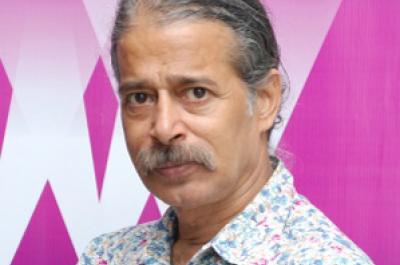CINEMATOGRAPHY
Overview:
Cinema is ‘Visual Storytelling’ thus the Visual plays a critical part in filmmaking. For the first 40 years, Cinema didn’t use dialog. 2 hour long stories were told through visuals only. Over the years a language was created – the cinematic language – with its own syntax, grammar and idiom. The job of the Cinematographer is to translate the written word into images – which are the building blocks of Cinema. This Specialization will teach students how to use the visual medium to tell stories.
This Specialization endeavors to inculcate various skills in the students that allow them to become successful Cinematographers.

ASHWINI KAUL(ISC)
Head of Department
Semester II
Specialization Course:
| Specialization | Course Code | Cinematography | ||||
|---|---|---|---|---|---|---|
| 5 | FMAC 1201 | Cinematography Theory I | 8 | 0 | 8 | 120 |
| 6 | FMAC 1202 | Cinematography Practical | 0 | 8 | 8 | 240 |
| 7 | FMAC 1203 | Mise en Scene Project – A | 0 | 2 | 2 | 60 |
| Specialization Total | 8 | 10 | 18 | 420 |
FMAC 1201: Cinematography Theory I
Course Content
Unit I: Job and responsibilities of a Cinematographer
Unit II: Digital Still Camera familiarization
Unit III: Light meter use & Function Theory
Unit IV: Introduction to Electricity & studio power layout methods
Unit V: Framing, Composition & Lensing
Unit VI: Language of Cinema
FMAC 1202: Cinematography Practical I
Course Content
Unit I: 3-point lighting with DSLR Camera.
Unit II: Camera Operation & Focus pulling with Sony D-50 Camera – Studio
Unit III: Operation & Focus pulling with Sony D-50 Camera – Exterior
Unit IV: Set lighting practical with D-50 camera in a studio
Unit V: Color Practical
FMAC 1203: Mise-en-Scene Project – AC
Semester III
| Specialization | Course Code | Cinematography | ||||
|---|---|---|---|---|---|---|
| 3 | FMAC 1201 | Cinematography Theory II | 8 | 0 | 8 | 120 |
| 4 | FMAC 1202 | Cinematography Practical II | 0 | 10 | 10 | 300 |
| 5 | FMAC 1203 | Location Shoot Project – AC | 0 | 1 | 1 | 30 |
| 6 | FMAC 1204 | Night Shoot Project – AC | 0 | 2 | 2 | 60 |
| Specialization Total | 8 | 13 | 21 | 510 |
FMAC 2101: Cinematography Theory II
Course Content
Unit I: HD Video & Digital Cinematography
Unit II: Digital Post –Production Controls and Workflows
Unit III: Colour Temperature Theory
Unit IV: Introduction to formats: 35mm Motion picture photography
Unit V: Colour Theory
Unit VI: Language of Cinema
Unit VII: Music Video Theory
FMAC 1202: Cinematography Practical II
Course Content
Unit I: Hands on with HD Camera & Recorder – Interior
Unit II: Hands on with HD Camera & Recorder – Exterior
Unit III: Hands on with 35mm Camera – Interior
Unit IV: Hands on with 35mm Camera – Exterior
Unit V: Music Video
FMAC 2103: Location shoot Project – AC
Course Content
Unit I: Students will learn to shoot in a real location with attendant atmospheric issues.
FMAC 2104: Night Shoot Project – AC
Course Content
Unit I: Students will learn to shoot in a night location with attendant atmospheric issues.
Semester IV
| Specialization | Course Code | Cinematography | ||||
|---|---|---|---|---|---|---|
| 1 | FMAC 2201 | Cinematography Theory III | 4 | 0 | 4 | 60 |
| 2 | FMAC 2202 | Cinematography Practical III | 0 | 6 | 6 | 180 |
| 3 | FMAC 2203 | Diploma Film – AC | 0 | 10 | 10 | 300 |
| Specialization Total | 4 | 16 | 20 | 540 |
FMAC 2201: Cinematography Theory III
Course Content
Students will be given a historical perspective on the Evolution of Non Fiction film. They will study various Modes of Non fiction film making through viewing, studying and analysing classic Non Fiction films both Indian and International.
FMAC 2202: Cinematography Practical III
Course Content
Unit I: Documentary Film Practical – Research and Scripting
Unit II: Documentary Film Production Practical – Pre-Production
Unit III: Documentary Film Production Practical – Production
Unit IV: Documentary Film Production Practical – Post Production
Unit V: Documentary Film Production Practical – Presentation
FMAC 2203: Diploma Film – AC
Course Content
Part I: Pre Production
Part II: Greenlighting
Part III: Production & Post Production
Part V: Wrap and Review
